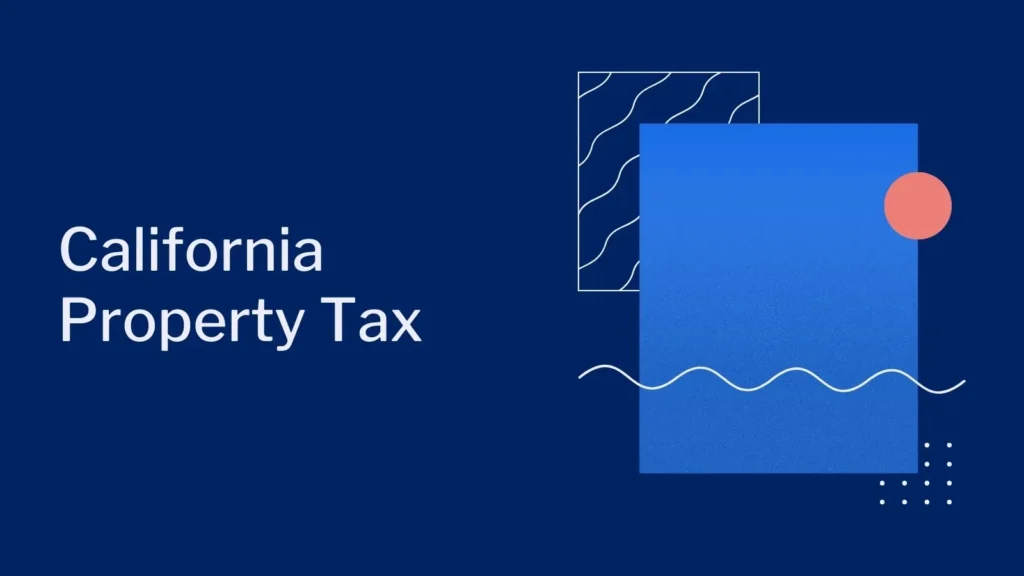Are you a homeowner in California or thinking about buying property in the Golden State? Navigating property taxes can seem daunting, but understanding the system is essential for your financial planning and peace of mind. In this guide, we’ll break down everything you need to know about California property taxes in 2024, including how Proposition 13 affects your taxes, property tax rates across different counties, available exemptions, and more.
By the end of this article, you’ll have a clear understanding of how property taxes are calculated, who is responsible for paying them, and how you can manage your tax obligations effectively.
Key Takeaways
- Proposition 13: limits property tax rates to 1% of the assessed value and caps annual increases at 2%.
- Property tax rates and payments: vary significantly across California’s counties.
- Exemptions: like the Homeowners’ Exemption can lower your property tax bill.
- Mello-Roos taxes: are additional local taxes used to fund public services and infrastructure.
- Understanding your property’s assessed value: is crucial for managing your tax obligations.
- Tools: like property tax calculators can help you estimate your tax payments accurately.
Understanding California Property Taxes
California’s property tax system is mainly governed by Proposition 13, a law passed by voters in 1978. This proposition changed how property taxes are assessed and collected, aiming to provide stability and predictability for property owners.
Base Tax Rate and Assessment
Under Proposition 13, the general property tax rate is capped at 1% of the property’s assessed value. The average effective property tax rate in California is around 0.71%, which is lower than the national average of 0.99%.
Assessment Rules
When you buy a property, its assessed value is set to the purchase price. Each year, the assessed value can increase by up to 2% to account for inflation, regardless of how much the market value may rise. This cap continues until the property is sold or significantly improved.
Who Pays California Property Taxes?
If you own real estate in California—whether as an individual or a business—you must pay state property taxes. This includes properties received as gifts, inherited, or owned as rental real estate. There’s no minimum or maximum tax amount; taxes are based on the property’s value. If you buy a property mid-year, your mortgage lender may split the property taxes with the seller based on the fiscal year.
How to Calculate Property Taxes Under Proposition 13
Proposition 13 sets specific rules on how property taxes are calculated:
- Tax Rate Limitation: The property tax is capped at 1% of the property’s market value.
- Growth Restriction on Assessed Values: After the initial purchase, the assessed value can only increase by 2% annually, regardless of market appreciation.
These rules keep California’s property tax rates below the national average, providing long-term stability for property owners.
Benefits of Proposition 13
- Stability: Predictable property tax bills make financial planning easier.
- Protection for Long-Term Owners: Long-time homeowners benefit from lower assessed values compared to current market values, resulting in lower effective tax rates.
- Encourages Home Ownership: By limiting tax increases, home ownership becomes more affordable and less financially risky.
Property Tax Exemptions
Homeowners’ Exemption
This exemption reduces the taxable value of your primary residence by $7,000, saving you about $70-$80 annually. To qualify, you must live in the property as your main home and file a one-time claim with the county assessor.
Disabled Veterans’ Exemption
Qualified disabled veterans or their unmarried surviving spouses can receive exemptions on their principal residence. For properties with a 2024 lien date:
- Basic Exemption: $169,769
- Low-Income Veterans: $254,656
Eligibility includes a 100% disability rating or blindness in both eyes, among other conditions.
Proposition 19 Benefits
Proposition 19, an amendment, provides tax benefits for seniors, severely disabled individuals, families, and victims of wildfires or natural disasters.
Recent Legislative Updates
In 2024, California introduced new laws impacting property taxes:
- Senate Bill 726: For properties with lien dates from January 1, 2024, to January 1, 2034, this bill increases the property tax exemption for eligible disabled veterans to $863,790, adjusted annually for inflation.
- Accessory Dwelling Units (ADUs): New laws allow homeowners to build up to eight detached ADUs on a lot, up from the previous limit of two. Additionally, newly built ADUs may be exempt from property taxes for up to 15 years, promoting affordable housing development.
Payment Deadlines
Property taxes are generally paid in two installments:
- First Installment: Due November 1; delinquent after December 10.
- Second Installment: Due February 1; delinquent after April 10.
Paying on time is important to avoid penalties.
County Variations
Property tax rates vary across California’s counties. Here’s a snapshot:
- Marin County: High average property taxes, with homeowners paying around $5,500 annually (0.63% of median home value).
- Modoc County: One of the lowest, with an average annual property tax of $953 (0.6% of median home value).
Understanding Mello-Roos Taxes
Mello-Roos taxes are special taxes in certain districts to fund public services and infrastructure projects. These taxes are in addition to the standard property tax and are not capped by Proposition 13. The amounts can vary widely based on the specific needs and approved projects within each Community Facilities District (CFD).
Property Transfers
In some cases, like transfers between parents and children, properties may keep their existing assessed value, leading to significant tax savings.
Assessment Appeals
If you believe your property is over-assessed, you can appeal. Filing deadlines vary by county:
- September 16, 2024: For counties like Alameda, San Francisco, and Santa Clara.
- December 2, 2024: For other counties.
Temporary Reductions
Under Proposition 8, if your property’s market value falls below its assessed value, you can request a temporary revaluation. These reductions stay until the assessor determines that the property’s value has increased.
How to Estimate Your Property Taxes
The 1.25% Rule
A simple method is to multiply your home’s purchase price by 1.25%, which includes the 1% state tax and approximately 0.25% in local taxes.
Example: A $500,000 home would have an estimated annual property tax of $6,250.
Online Property Tax Calculators
For a more accurate estimate, use online calculators that consider your property’s location, exemptions, and local tax rates.
California Real Property Tax Rates by County
California Property Tax Rates by County
County Name
Median Home Value: $
Median Annual Property Tax Payment: $
Effective Tax Rate: %
Frequently Asked Questions (FAQs)
How do California property taxes work under Proposition 13?
Proposition 13 limits the general property tax rate to 1% of the property’s assessed value and caps annual increases in assessed value to 2%, unless there’s a change in ownership or significant property improvement.
How can California homeowners estimate their property tax bills using the 1.25% rule?
Multiply your home’s purchase price by 1.25%. For example, a $500,000 home would have an estimated annual property tax of $6,250.
What are Mello-Roos taxes, and how do they impact property taxes in California?
Mello-Roos taxes are special taxes in certain districts to fund public services and infrastructure. They are added to standard property taxes and are not subject to Proposition 13’s 1% cap.
How is the effective property tax rate in California calculated?
It’s calculated by dividing the total property taxes paid by the property’s market value. Due to Proposition 13, the assessed value is often lower, resulting in an effective tax rate below the nominal 1%.
Additional Information
Proposition 13 and Property Tax Increases
Proposition 13 caps annual increases in assessed value at 2%, ensuring manageable property tax obligations over time. However, buying a new home or making major renovations can trigger a reassessment to current market values, potentially increasing your property tax bill.
Impact of Solar Installations
Solar installations in California are usually exempt from increasing your property’s assessed value. This encourages the adoption of renewable energy without penalizing homeowners with higher taxes. If you install solar panels, you might need to submit forms to claim the exemption to prevent a reassessment.
Reassessments and Appeals
If you believe your property has been unfairly reassessed, you can appeal the assessment. Many counties allow homeowners to challenge their assessments, especially if errors were made or if the reassessment was triggered incorrectly.
Conclusion
California’s property tax system, shaped by Proposition 13, offers stability and predictability for homeowners but also comes with complexities, especially in high-value areas. Understanding how property taxes are calculated, the impact of local variations, and the available exemptions can help you manage your tax obligations effectively.
Whether you’re a long-term homeowner benefiting from Proposition 13 or a new buyer facing high property values and additional taxes like Mello-Roos, staying informed and seeking professional advice can make a significant difference in your financial planning.
Website: https://www.xoatax.com/
Phone: +1 (714) 594-6986
Email: [email protected]
Contact Page: https://www.xoatax.com/contact-us/
Disclaimer: This post is for informational purposes only and does not provide legal, tax, or financial advice. Laws, regulations, and tax rates can change often and vary significantly by state and locality. This communication is not intended to be a solicitation, and XOA TAX does not provide legal advice. XOA TAX does not assume any obligation to update or revise the information to reflect changes in laws, regulations, or other factors. For further guidance, refer to IRS Circular 230. Please consult a professional advisor for advice specific to your situation.




 anywhere
anywhere  anytime
anytime